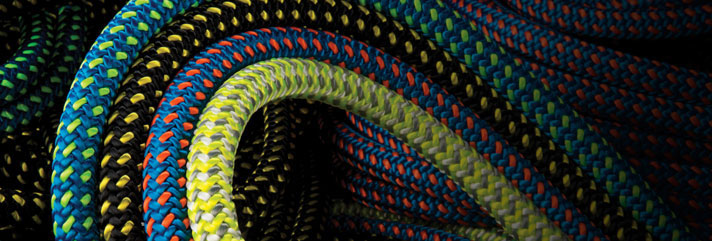Article content contributed by SherrillTree
Some rope manufacturers state that textile rope has a life expectancy of 10 years — but that’s only if it’s sitting on a shelf. A rope’s functional life depends on how you use it, how well you take care of it and how you store it. We worked with the experts at SherrillTree to provide some guidelines to help you make an educated decision about when it’s time to replace your climbing line.
Climbing friction and rope wear is an inevitable part of the gig, and can include but not be limited to:
- Bark of the tree,
- Climbing ascenders, which have teeth that can cause damage,
- Friction hitches used to ascend and descend,
- Heat produced by friction from the natural crotch of the tree,
- Exposure to chemicals and ultraviolet rays,
- Handsaws and chainsaws.
Inspecting your climbing line
SherrillTree follows the ANSI Z133-2012 standard section 8.1.4, which states that arborists shall inspect climbing lines, work lanyards and other climbing equipment for damage before each use and shall remove them from service if signs of excessive wear or damage are found.
“A good rule of thumb is to inspect the rope before and after each climb,” said Brandon Nance, technical advisor at SherrillTree. “You have to put the rope back in the rope bag anyway, so it’s a good time to visually and tactilely inspect it with your hands for signs of wear and damage.”
Here are three telltale signs it’s time to replace your rope:
- Cuts, excessive fraying, pulled strands and melted or glazed fibers caused by high friction applications.
- Deformation of any kind — like flattening — which indicates the internal strands of the rope may have been damaged.
- History of the rope — if it has been subjected to a high dynamic load that exceeds its working load limit, you should retire the rope.
“People tend to forget this but rope remembers everything you do to it,” said Nance. “The working load limit should be within 10% of the rope’s tinsel strength. When you exceed the safe working load, it is important to be aware of the loads being applied to the rope and cycles to failure.”
Extending the usable life of your climbing line
Some of the best ways to reduce friction and help extend the usable life of the rope include:
- Using a friction saver, like a leather cambium saver or false crotch, which prevents the rope from interacting directly with the tree bark.
- Confirm that the gear that you’re using on the line is compatible with the diameter of the rope.
- Be contentious of what the rope is rubbing against while you’re working in the tree.
- Be aware of where your handsaw is in location to the rope at all times.
- Inspect the rope before and after each use.
- Protect the rope from the ground up — don’t lower limbs onto the rope.
- Store it in a rope bag, in a cool, dry and dark location.
There are no hard and fast rules about when to replace a rope. At the end of the day, it’s a personal choice — do you feel safe climbing on the line?
“My advice is when in question, retire the climbing line and replace it,” said Nance. “Too often, people try to stretch the life of these things out exponentially and that’s when they have bad results.”
Brandon Nance is the technical advisor at SherrillTree in Greensboro, North Carolina. SherrillTree strives to provide tree care professionals and climbers with quality tree gear, helpful information and superior service. If you have questions about tree climbing safety or gear, you can contact SherrillTree Customer Service at 1-800-525-8873 or info@sherrilltree.com.
